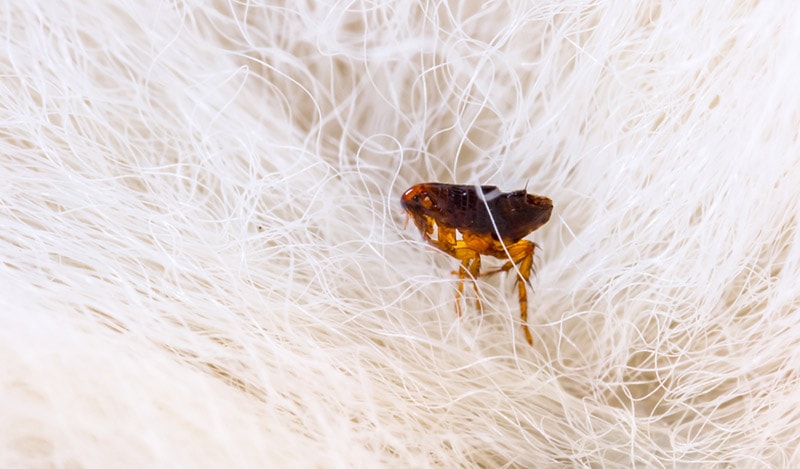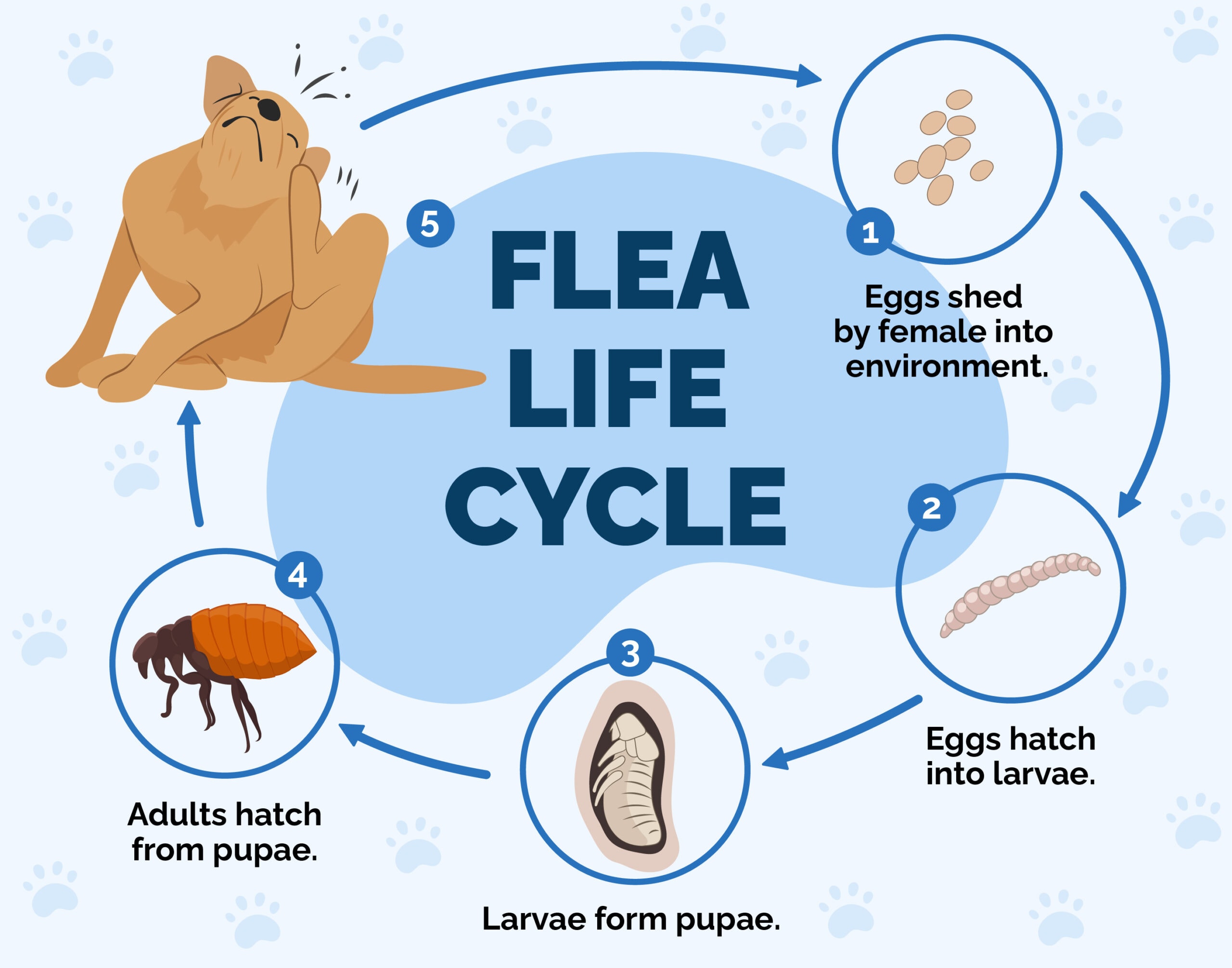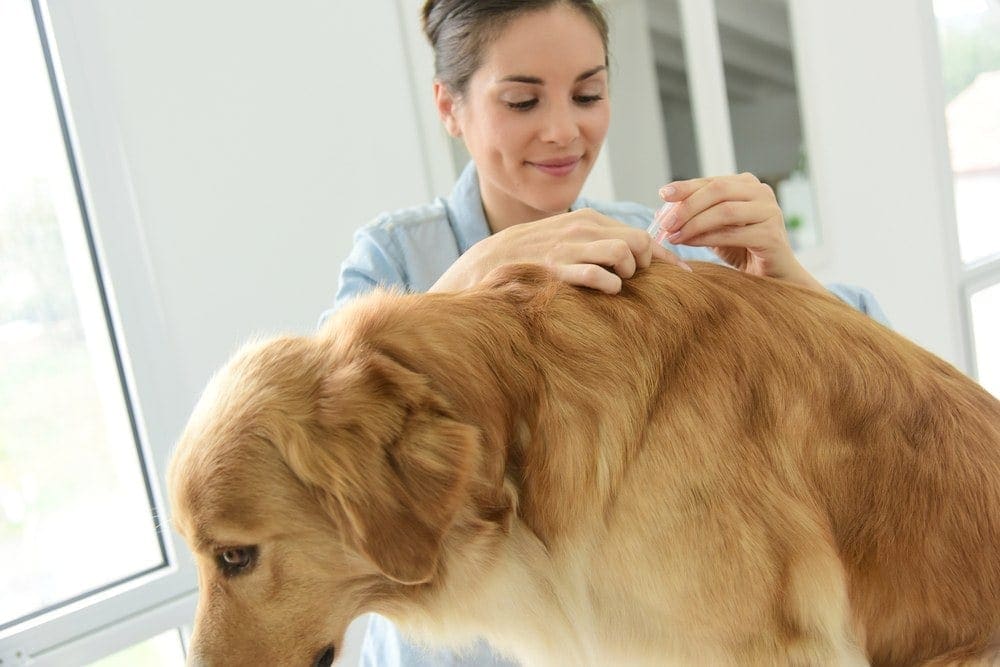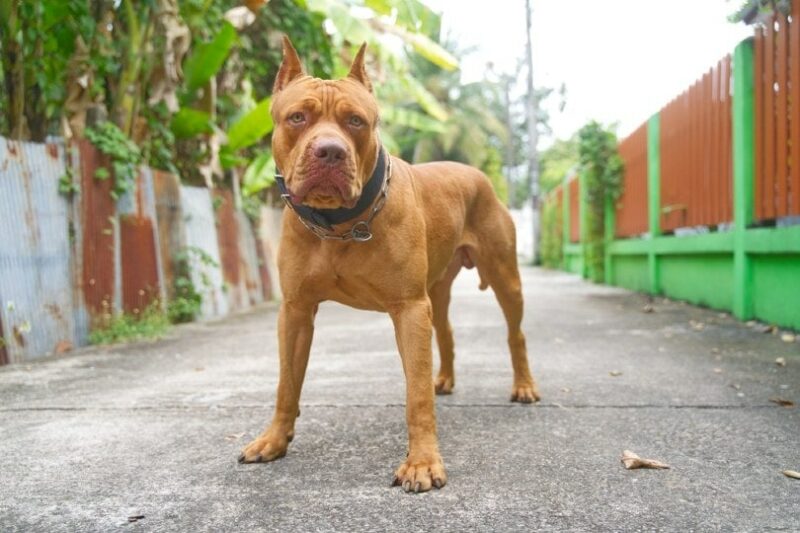Can My Dog Get Fleas in The Winter? Vet Reviewed Facts & FAQ

Updated on

Just like most animals, fleas go through various stages of growth and development. They don’t usually do so well under freezing temperatures and any time they are exposed to sub-zero temperatures—or anything close—they end up dying. The few that get to survive are those who’ve already latched onto warm-blooded hosts.
The heat being produced by a warm-blooded creature is more than enough to keep them alive until the weather changes. So, if you were wondering whether it’s possible for fleas to get to your dog during winter, they most certainly can.
We’ll tell you how to deal with the problem after we’ve shared a detailed explanation of how it happens.
How Is It Possible for Dogs to Get Fleas During Winter?
To answer this question, you first have to understand how these pesky parasites live and thrive. According to parasitologists, fleas have four distinguishable stages of the life cycle. In the first stage, you’ll find the egg, which typically hatches into a larva. The larva then goes on to morph into a pupa, before becoming an adult.
The eggs are mostly laid on a host’s skin, but unlike those of other parasites, they aren’t sticky. If your dog has thick or long fur (and is less active) the eggs won’t fall to the ground immediately. But if you own a short-coated breed, the eggs will fall off the minute they get laid.
On average, a female flea can lay up to 50 eggs per day. But they’ll be laying them in batches, after every meal. A single flea can easily produce more than 2,000 eggs in its lifetime.
At the larval stage, they don’t like being exposed to strong light and prefer areas that are darker. By the way, they love hiding under different pieces of furniture and areas that are not only dark but also moist and warm.
Larvae feed on any available organic material, including feces, conspecific eggs, plants, and insects. After 2 or 3 weeks in this stage, larvae weave their cocoons, known as pupae. The larvae develop into adults inside the pupae, where they can stay for days or even weeks until the conditions are right or a nearby host is detected.
Adult fleas prefer spending most of their time in environments that are warm and adequately illuminated by light. That’s why they have no problem hiding underneath your dog’s fur.
If the conditions are optimal—meaning, there’s no shortage of food supply and the humidity as well as temperature levels are to their liking—the adult flea can comfortably live on its host for months. But generally, most of them die after 8 to 12 weeks.1

How Do Fleas Survive Winter?
Parasitologists believe no flea can survive temperatures below 30.2ºF for more than 5 days unless they are attached to a warm-blooded host. So as the conditions change, they start looking for hosts that they can be able to feed off of indefinitely. We usually like to keep our homes warm during winter, not knowing that we’re providing warmth to the fleas as well.
How Do You Get Rid of Dog Fleas in Your Home?
You should always consult your veterinarian before applying any flea treatment to your dog. Some dogs are especially sensitive to certain medications, and it is better to be safe than sorry. The veterinarian will be able to advise you on the best products and plan to follow.
The only way to get rid of fleas in a home is through the application of different treatments. Eradicating fleas goes beyond just treating your dog. Fleas lay eggs that often take weeks to hatch. Since the eggs could be anywhere in the house, a thorough cleaning is imperative in order to get rid of the infestation.
With medical treatments, you might have killed the parents and the young generation, but the eggs will still hatch and give you more issues to deal with in the future. To prevent this, it is highly recommended to steam and vacuum every surface of your home and wash all bedding with warm soapy water.
- Flea Growth Regulators: This treatment is preventative in nature and administered orally. Nearly all of them are in tablet form and are supposed to be mixed with food, once every month. Flea growth regulators prevent flea larvae from maturing into adults, eventually eradicating the population.
- Insect Development Inhibitors: These prevent the production of chitin, the substance used to produce the adult flea’s exoskeleton, or outer layer.
- Adulticides: These substances only kill flea adults.
- Oral Dog Flea Treatments: “Oral” implies that you have to administer this form of treatment through the mouth. They usually look like ordinary pills and are considered one of the most effective remedies on the market.
- Spot-On Dog Flea Treatments: This type of remedy has to be applied directly onto the dog’s skin. That means that you’ll have to part your furry friend’s hair to allow the solution to get to those hard-to-reach areas. Most of them are so potent that they have the ability to kill all the fleas within 24 hours.

How Do You Know Your Dog Has Fleas?
Immediately spotting the eggs or even their parents can be a challenge, especially if you own a breed that has long, thick fur. That’s why we’re often advised to be attentive while grooming our dogs. Instead of using a regular comb, go for the fine one. The kind that has bristles that can get to any flea, egg, or even dropping. You’ll also notice agitated behavior in your dog. Fleas are like ants running around your body and it’s extremely uncomfortable, hence the reason why dogs normally seem restless. Persistent licking, biting, and scratching, are all considered abnormal in our books. The flea bites are obviously making them feel itchy.
Conclusion
Dogs can certainly get fleas in the winter, although not as much as in the summer. If you’re vigilant with treatments, however, there is not much to worry about.
Being a pet parent is magical. That being said, you have to take good care of your dogs, and flea treatments and prevention are vital.
See Also:
- Can Dogs Get Lice From Humans? 9 Signs of Infection in a Dog
- How Long Does Flea Medicine Take to Dry? Vet-Approved Facts & Tips
Featured Image Credit: Vera Larina, Shutterstock












